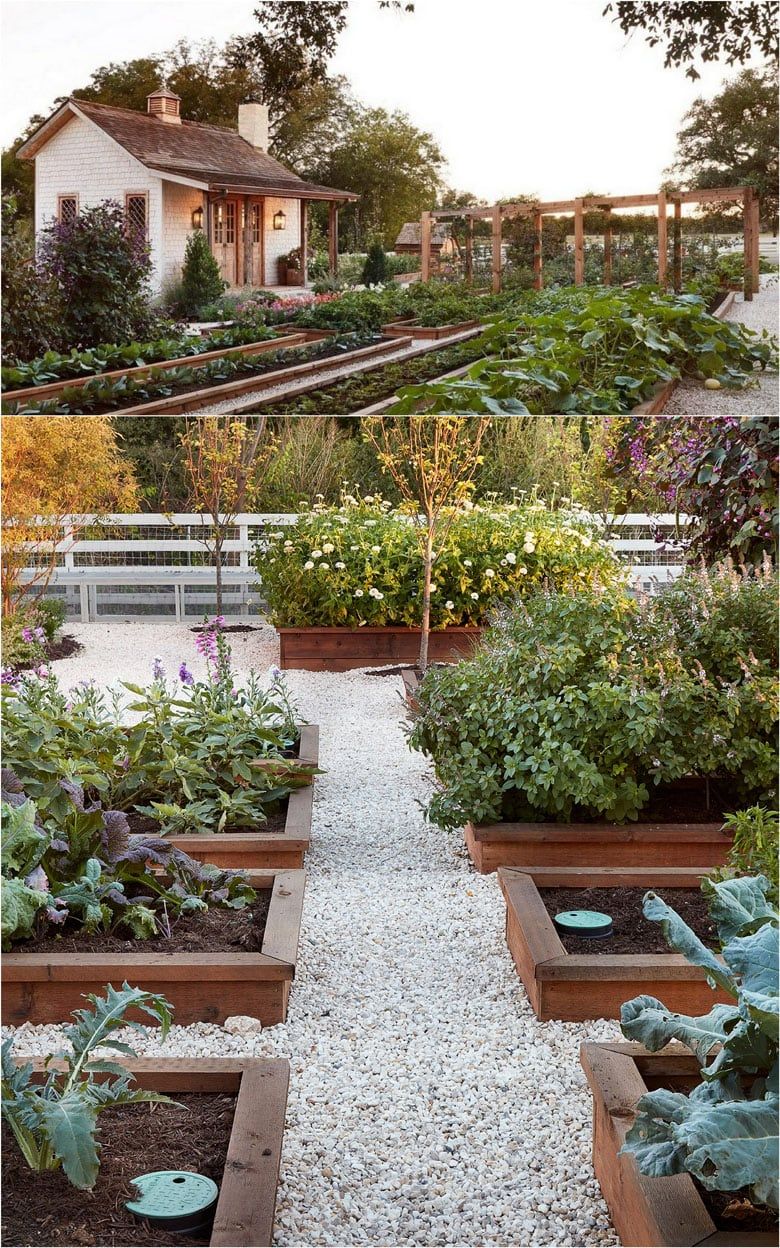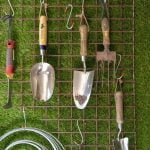A well-designed front yard can significantly enhance the aesthetic appeal of your home while also creating a welcoming atmosphere for visitors and passersby. In this blog post, we will explore a variety of simple front landscaping ideas that can transform your outdoor space into a beautiful and functional area.
From choosing the right plants to creating a focal point, enhancing walkways and entryways, incorporating functional elements, and maintaining low-maintenance design, there are numerous ways to elevate the look of your front yard.
Having an attractive front yard not only adds curb appeal to your property but also provides a pleasant outdoor space for you and your family to enjoy. By implementing some of the following ideas, you can create a visually appealing landscape that reflects your personal style and complements your home’s architecture.
We will cover everything from seasonal change ideas to budget-friendly tips, so you can easily make enhancements to your front yard regardless of your budget or level of expertise in landscaping.
Whether you’re a gardening novice or an experienced landscaper, these simple front landscaping ideas will provide you with inspiration on how to improve the appearance and functionality of your front yard. With minimal effort and investment, you can create a stunning outdoor space that enhances the overall look of your home and creates a warm welcome for all who approach.
So let’s dive into the various aspects of front yard landscaping and find the perfect ideas for transforming it into an attractive oasis.
Choosing the Right Plants
When it comes to simple front landscaping ideas, choosing the right plants is a crucial aspect of creating a beautiful and low-maintenance front yard. Here are some helpful tips for selecting the perfect plants for your front landscaping:
- Consider low-maintenance plants: Look for plants that require minimal care and upkeep. This can include options such as succulents, ornamental grasses, and drought-resistant perennials.
- Choose plants that thrive in your climate: Make sure to select plants that are well-suited to the weather conditions in your area. Research what types of flowers, trees, and shrubs grow best in your region.
- Incorporate a variety of plant types: To add visual interest to your front yard, consider incorporating a mix of flowers, trees, and shrubs. This will create depth and texture in your landscaping design.
In addition to these tips, it’s also important to consider the overall aesthetic you want to achieve with your front landscaping. Whether you prefer a lush garden or a more minimalist look, the right plants can help you achieve your desired style.
By following these simple guidelines for choosing the right plants, you can create a visually stunning front yard that enhances the curb appeal of your home while minimizing the need for extensive maintenance. Keep in mind that proper planning and research will go a long way in ensuring that your front landscaping thrives throughout the year.
Creating a Focal Point
Creating a visually stunning focal point in your front yard can significantly enhance its overall appeal and make a lasting impression on visitors. One simple front landscaping idea is to add a water feature, such as a small pond or fountain, to create a soothing and calming ambiance.
A sculpture or unique plant can also serve as an eye-catching focal point that adds personality to your front yard. By incorporating a focal point, you can draw attention to specific areas of your landscape and create visual interest.
When choosing a focal point for your front yard, consider the size and layout of the space. For smaller yards, a carefully positioned sculpture or decorative planter may be more suitable, while larger yards can accommodate more substantial features like a water fountain or large tree. Additionally, take into account the style of your home and existing landscaping elements when selecting a focal point to ensure it complements the overall design.
A well-designed focal point in your front yard can elevate the curb appeal of your home and create a warm welcome for both residents and guests. Here are some suggestions for creating an appealing focal point:
- Install a small water fountain
- Position an art statement piece like sculpture or ornamental planter
- Plant distinctive trees or shrubs with vibrant foliage
| Focal Point Ideas | Front Landscaping Element |
|---|---|
| Water Feature | Small pond or fountain |
| Sculpture or Decorative Planter | Eye-catching art piece |
| Unique Trees and Shrubs | Vibrant foliage to create visual interest |
Walkway and Entryway Design
Creating a visually appealing walkway and entryway design is an essential part of front landscaping. The entry to a home is the first thing visitors see, so making it inviting and well-designed can greatly enhance curb appeal.
One of the simple front landscaping ideas for the walkway is to use natural stone pavers or bricks to create a pathway that leads directly to the front door. Using materials like these not only looks beautiful but also provides durability and low maintenance.
Choosing the right materials for the walkway is crucial in creating a cohesive look with the overall landscape design. Incorporating decorative elements such as stone, gravel, or sand can add character and charm to the pathway. Additionally, using outdoor lighting along the walkway can enhance safety and aesthetics during evenings.
For the entryway design, consider adding personal touches such as potted plants, seasonal wreaths, or decorative light fixtures. Overhead structures like arbors or pergolas can also make for an impactful focal point at the entrance while providing some shade and privacy.
It’s important to keep in mind that maintaining symmetry with landscaping elements in front yard design is visually appealing. However, experimenting with shapes and styles can also create unique and interesting focal points in your garden space for more character.
| Walkway Design Ideas | Entryway Design Tips |
|---|---|
| Natural stone pavers or bricks | Potted plants and seasonal wreaths |
| Use of decorative elements like stone or gravel | Addition of light fixtures at entrance |
Functional Landscaping Elements
Ideas for incorporating functional elements into your front landscaping go beyond just adding visual appeal. By integrating features that serve a purpose, you can make your front yard a more inviting and enjoyable space for both you and your guests. Here are some simple front landscaping ideas to consider:
- Seating Areas: Creating a small seating area in your front yard can provide a place to relax and enjoy the outdoors. Consider adding a bench, outdoor chairs, or even a porch swing to create a cozy spot.
- Outdoor Lighting: Adding lighting to your front yard not only enhances its appearance but also improves safety and security. Pathway lights, spotlights on trees or architectural features, and porch lighting are all excellent options.
- Functional Pathways: In addition to being visually appealing, pathways in the front yard can also guide visitors to the entrance of your home and protect your lawn from foot traffic. Choose durable materials such as concrete, stone, or brick for longevity.
Maximizing the use of space in your front yard is essential when incorporating functional elements. Keep in mind how these additions fit into the overall design of the space while also serving their intended purposes. For example, strategically placing seating areas near focal points or creating pathways that flow naturally through the yard can enhance both the aesthetic and functionality of the space.
By considering these simple front landscaping ideas for functional elements, you can transform your front yard into an attractive and practical outdoor living area.
As with any design project, it’s important to consider how functional landscaping elements will fit into your overall vision for your front yard. Will they complement the existing features of your landscape? Is there enough space to incorporate these new elements without overcrowding the area? Taking time to plan and execute these additions thoughtfully will ensure that they enhance rather than detract from your home’s curb appeal.
Low Maintenance Design
Tips for Designing a Front Yard That Requires Minimal Upkeep
When it comes to creating a low maintenance front yard, one of the key factors to consider is the choice of plants. Opt for plants that are drought-tolerant and require little to no pruning or special care. Some great options include succulents, ornamental grasses, and native plants.
Another important aspect of low maintenance design is to keep the layout simple and clutter-free. Avoid intricate designs that will require frequent trimming and instead, opt for clean lines and minimalistic arrangements.
Recommendations for Using Low-Maintenance Materials and Plants
In addition to choosing the right plants, it’s also essential to utilize materials that are easy to maintain. For example, consider using gravel or mulch for ground cover instead of traditional grass which requires regular mowing. Hardscaping elements such as pavers or stone pathways are also excellent choices as they require minimal upkeep compared to a lawn. Additionally, incorporating artificial turf can be a great alternative for those who want the look of real grass without the maintenance.
Ideas for Reducing the Need for Regular Maintenance Tasks
There are several smart design ideas that can help reduce the need for regular maintenance in your front yard. For instance, installing an irrigation system can make watering your plants effortless and efficient. Incorporating raised beds or container gardens can also make gardening tasks more manageable while adding visual interest to your landscape.
Furthermore, selecting perennial plants over annuals will save you time and effort on replanting every year. By implementing these simple front landscaping ideas, you can achieve a beautiful and functional front yard with minimal upkeep required.
Seasonal Change Ideas
As the seasons change, it’s a great opportunity to switch up your front landscaping to keep your yard looking fresh and inviting throughout the year. One of the simplest ways to do this is by incorporating seasonal plants and decor that reflect the colors and themes of each season.
For example, in the spring, you can plant colorful flowers like tulips, daffodils, and hyacinths to add a burst of color to your front yard. In the summer, consider adding bright annuals like petunias or marigolds for a vibrant look.
During the fall season, you can update your front landscaping with warm, rich tones by incorporating plants like mums, ornamental kale, or decorative grasses. Don’t forget to add some pumpkins or gourds for a festive touch. When winter arrives, consider adding evergreen plants like holly or flowering shrubs for a pop of color against the white snow.
Transitioning from one season to the next can be made simpler by choosing plants that are low-maintenance but still offer variety and appeal throughout the year. By selecting a combination of perennials and annuals that bloom at different times, you can create a landscape that evolves with each season without requiring extensive maintenance.
To enhance the seasonal transition in your front yard even further, consider incorporating seasonal decor elements such as outdoor lanterns or string lights for an extra cozy feel in the fall and winter months. Whether it’s changing out planters, adding seasonal wreaths to your door, or simply swapping out outdoor pillows on your seating area – small changes can go a long way in creating a welcoming space during any time of year.
Budget-Friendly Tips
In conclusion, creating a beautiful front yard doesn’t have to be expensive or complicated. By implementing simple front landscaping ideas, anyone can enhance their home’s curb appeal without breaking the bank. From choosing the right plants to incorporating budget-friendly design elements, there are numerous ways to create an attractive and inviting front yard on a limited budget.
One of the key aspects of budget-friendly front landscaping is making smart choices when it comes to plants and materials. Selecting low-maintenance plants that thrive in various weather conditions can save both time and money in the long run. Additionally, repurposing existing elements, opting for affordable landscaping materials, and taking on DIY projects are great ways to achieve a beautiful front yard without overspending.
Furthermore, seasonal change ideas offer an opportunity to refresh the front landscaping without significant costs. By incorporating seasonal plants and decor, homeowners can easily transition their front yard from one season to the next, adding visual interest and variety throughout the year. Ultimately, with a little creativity and strategic planning, it’s entirely possible to create a stunning front yard that reflects personal style and enhances the overall appearance of any home – all without breaking the bank.
Frequently Asked Questions
What Is the Best Low Maintenance Landscaping?
The best low maintenance landscaping typically involves using native plants that are well-suited to the local climate and require minimal water and care. Incorporating mulch, rocks, or gravel can help reduce the need for watering and weeding. Additionally, choosing perennial plants over annuals can cut down on the amount of replanting required each year.
How Can I Make My Front Yard Look Better on a Budget?
Making your front yard look better on a budget can be achieved through a variety of methods. Simple things like keeping the lawn well-maintained, adding colorful potted plants, and defining borders with edging can greatly improve the overall appearance without breaking the bank.
DIY projects such as building a small path or creating a focal point with inexpensive landscaping elements can also elevate the front yard’s aesthetic.
How Do You Landscape a Bare Front Yard?
When landscaping a bare front yard, it’s important to start by assessing the space and determining the optimal layout for plants, pathways, and other features. This might involve sketching out a rough plan or visualizing how different elements would fit together in the space.
From there, selecting appropriate plant species that thrive in the area’s sunlight conditions and soil type is crucial for ensuring successful growth and development of the landscape over time. The strategic placement of trees, shrubs, and ground cover can help create visual interest and add depth to an otherwise bare front yard.

Welcome to my gardening blog! I am passionate about plants and enjoy sharing my knowledge and experiences with others. In this blog, I will write about everything related to gardening, from tips on how to get started to updates on my own garden projects.





